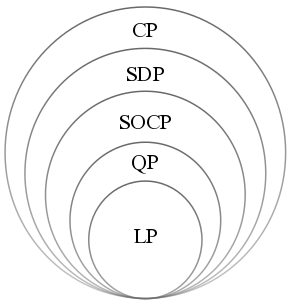|
Matthew Brand
Matthew Brand is a scientist and artist based in Berlin, Germany. Brand's research focuses on mathematical and computational models of perception, learning, and control, in which each is treated as an optimization problem. He is best known for working on the following topics: * Lumography is the shaping of optical surfaces so that a reflected or refracted beam of light produces a pre-focal image when scattered. The Composites Gallery in New York has a long-running show of lumographic lenses that cast photographic images on walls. * Specular holograms are three-dimensional images made of thousands of dots of light that glint off of finely carved metal or glass. The National Museum of Mathematics in New York has a large art installation of specular holograms. * PQP is a method for solving very large convex optimization problems, particularly quadratic programming, in parallel. It enables real-time optimal control of extremely fast machinery.. * Incremental singular value decompos ... [...More Info...] [...Related Items...] OR: [Wikipedia] [Google] [Baidu] |
Specular Holography
Specular holography is a technique for making three dimensional imagery by controlling the motion of Specularity, specular glints on a two-dimensional surface. The image is made of many specularities and has the appearance of a Stereoscopy, 3D surface-stippling made of dots of light. Unlike conventional wavefront holograms, specular holograms do not depend on wave optics, photographic media, or lasers. The principle of operation is purely one of geometric optics: A point light source produces a glint on a curved specular (shiny) surface; this glint appears to travel on the surface as the eye or light source moves. If that motion is projectively consistent with binocular disparity, the viewer will perceive — via stereopsis — the illusion that the glint occurs at a different depth than the surface that produces it. A specular hologram contains many such curved surfaces, all embedded in a host surface. Each produces a glint and the brain integrates the many 3D c ... [...More Info...] [...Related Items...] OR: [Wikipedia] [Google] [Baidu] |
National Museum Of Mathematics
The National Museum of Mathematics or MoMath is a museum dedicated to mathematics in Manhattan, New York City. It opened on December 15, 2012. It is located at 11 26th Street (Manhattan), East 26th Street between Fifth Avenue (Manhattan), Fifth and Madison Avenue (Manhattan), Madison Avenues, across from Madison Square Park in the NoMad neighborhood. It is the only museum dedicated to mathematics in North America, and features over thirty interactive exhibits. The mission of the museum is to "enhance public understanding and perception of mathematics". The museum is known for a special tricycle with square wheels, which operates smoothly on a catenary surface. History In 2006 the Goudreau Museum of Mathematics in Art and Science, Goudreau Museum on Long Island, New York, Long Island, at the time the only museum in the United States dedicated to mathematics, closed its doors. In response, a group led by founder and former CEO Glen Whitney met to explore the opening of a new museu ... [...More Info...] [...Related Items...] OR: [Wikipedia] [Google] [Baidu] |
Convex Optimization
Convex optimization is a subfield of mathematical optimization that studies the problem of minimizing convex functions over convex sets (or, equivalently, maximizing concave functions over convex sets). Many classes of convex optimization problems admit polynomial-time algorithms, whereas mathematical optimization is in general NP-hard. Convex optimization has applications in a wide range of disciplines, such as automatic control systems, estimation and signal processing, communications and networks, electronic circuit design, data analysis and modeling, finance, statistics ( optimal experimental design), and structural optimization, where the approximation concept has proven to be efficient. With recent advancements in computing and optimization algorithms, convex programming is nearly as straightforward as linear programming. Definition A convex optimization problem is an optimization problem in which the objective function is a convex function and the feasible set is a c ... [...More Info...] [...Related Items...] OR: [Wikipedia] [Google] [Baidu] |
Quadratic Programming
Quadratic programming (QP) is the process of solving certain mathematical optimization problems involving quadratic functions. Specifically, one seeks to optimize (minimize or maximize) a multivariate quadratic function subject to linear constraints on the variables. Quadratic programming is a type of nonlinear programming. "Programming" in this context refers to a formal procedure for solving mathematical problems. This usage dates to the 1940s and is not specifically tied to the more recent notion of "computer programming." To avoid confusion, some practitioners prefer the term "optimization" — e.g., "quadratic optimization." Problem formulation The quadratic programming problem with variables and constraints can be formulated as follows. Given: * a real-valued, -dimensional vector , * an -dimensional real symmetric matrix , * an -dimensional real matrix , and * an -dimensional real vector , the objective of quadratic programming is to find an -dimensional vector , that wi ... [...More Info...] [...Related Items...] OR: [Wikipedia] [Google] [Baidu] |
Singular Value Decomposition
In linear algebra, the singular value decomposition (SVD) is a factorization of a real or complex matrix. It generalizes the eigendecomposition of a square normal matrix with an orthonormal eigenbasis to any \ m \times n\ matrix. It is related to the polar decomposition. Specifically, the singular value decomposition of an \ m \times n\ complex matrix is a factorization of the form \ \mathbf = \mathbf\ , where is an \ m \times m\ complex unitary matrix, \ \mathbf\ is an \ m \times n\ rectangular diagonal matrix with non-negative real numbers on the diagonal, is an n \times n complex unitary matrix, and \ \mathbf\ is the conjugate transpose of . Such decomposition always exists for any complex matrix. If is real, then and can be guaranteed to be real orthogonal matrices; in such contexts, the SVD is often denoted \ \mathbf^\mathsf\ . The diagonal entries \ \sigma_i = \Sigma_\ of \ \mathbf\ are uniquely determined by and are known as the singular values of . The n ... [...More Info...] [...Related Items...] OR: [Wikipedia] [Google] [Baidu] |
Latent Semantic Indexing
Latent semantic analysis (LSA) is a technique in natural language processing, in particular distributional semantics, of analyzing relationships between a set of documents and the terms they contain by producing a set of concepts related to the documents and terms. LSA assumes that words that are close in meaning will occur in similar pieces of text (the distributional hypothesis). A matrix containing word counts per document (rows represent unique words and columns represent each document) is constructed from a large piece of text and a mathematical technique called singular value decomposition (SVD) is used to reduce the number of rows while preserving the similarity structure among columns. Documents are then compared by cosine similarity between any two columns. Values close to 1 represent very similar documents while values close to 0 represent very dissimilar documents. An information retrieval technique using latent semantic structure was patented in 1988US Patent 4,839, ... [...More Info...] [...Related Items...] OR: [Wikipedia] [Google] [Baidu] |
Bayes Theorem
In probability theory and statistics, Bayes' theorem (alternatively Bayes' law or Bayes' rule), named after Thomas Bayes, describes the probability of an event, based on prior knowledge of conditions that might be related to the event. For example, if the risk of developing health problems is known to increase with age, Bayes' theorem allows the risk to an individual of a known age to be assessed more accurately (by conditioning it on their age) than simply assuming that the individual is typical of the population as a whole. One of the many applications of Bayes' theorem is Bayesian inference, a particular approach to statistical inference. When applied, the probabilities involved in the theorem may have different probability interpretations. With Bayesian probability interpretation, the theorem expresses how a degree of belief, expressed as a probability, should rationally change to account for the availability of related evidence. Bayesian inference is fundamental to Bayesia ... [...More Info...] [...Related Items...] OR: [Wikipedia] [Google] [Baidu] |
Occam's Razor
Occam's razor, Ockham's razor, or Ocham's razor ( la, novacula Occami), also known as the principle of parsimony or the law of parsimony ( la, lex parsimoniae), is the problem-solving principle that "entities should not be multiplied beyond necessity". It is generally understood in the sense that with competing theories or explanations, the simpler one, for example a model with fewer parameters, is to be preferred. The idea is frequently attributed to English Franciscan friar William of Ockham (), a scholastic philosopher and theologian, although he never used these exact words. This philosophical razor advocates that when presented with competing hypotheses about the same prediction, one should select the solution with the fewest assumptions, and that this is not meant to be a way of choosing between hypotheses that make different predictions. Similarly, in science, Occam's razor is used as an abductive heuristic in the development of theoretical models rather than as a rigoro ... [...More Info...] [...Related Items...] OR: [Wikipedia] [Google] [Baidu] |
Hidden Markov Models
A hidden Markov model (HMM) is a statistical Markov model in which the system being modeled is assumed to be a Markov process — call it X — with unobservable ("''hidden''") states. As part of the definition, HMM requires that there be an observable process Y whose outcomes are "influenced" by the outcomes of X in a known way. Since X cannot be observed directly, the goal is to learn about X by observing Y. HMM has an additional requirement that the outcome of Y at time t=t_0 must be "influenced" exclusively by the outcome of X at t=t_0 and that the outcomes of X and Y at t handwriting recognition, handwriting, gesture recognition, part-of-speech tagging, musical score following, partial discharges and bioinformatics. Definition Let X_n and Y_n be discrete-time stochastic processes and n\geq 1. The pair (X_n,Y_n) is a ''hidden Markov model'' if * X_n is a Markov process whose behavior is not directly observable ("hidden"); * \operatorname\bigl(Y_n \in A ... [...More Info...] [...Related Items...] OR: [Wikipedia] [Google] [Baidu] |
Living People
Related categories * :Year of birth missing (living people) / :Year of birth unknown * :Date of birth missing (living people) / :Date of birth unknown * :Place of birth missing (living people) / :Place of birth unknown * :Year of death missing / :Year of death unknown * :Date of death missing / :Date of death unknown * :Place of death missing / :Place of death unknown * :Missing middle or first names See also * :Dead people * :Template:L, which generates this category or death years, and birth year and sort keys. : {{DEFAULTSORT:Living people 21st-century people People by status ... [...More Info...] [...Related Items...] OR: [Wikipedia] [Google] [Baidu] |



